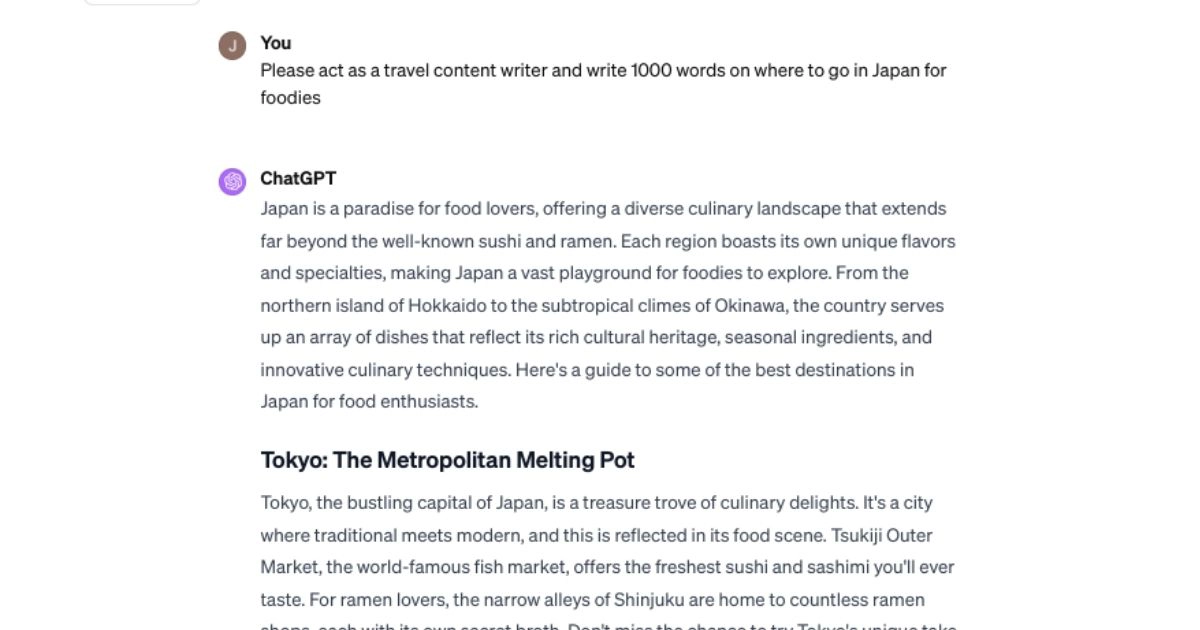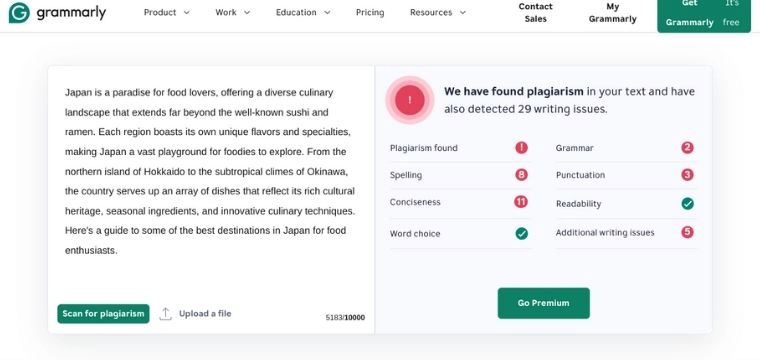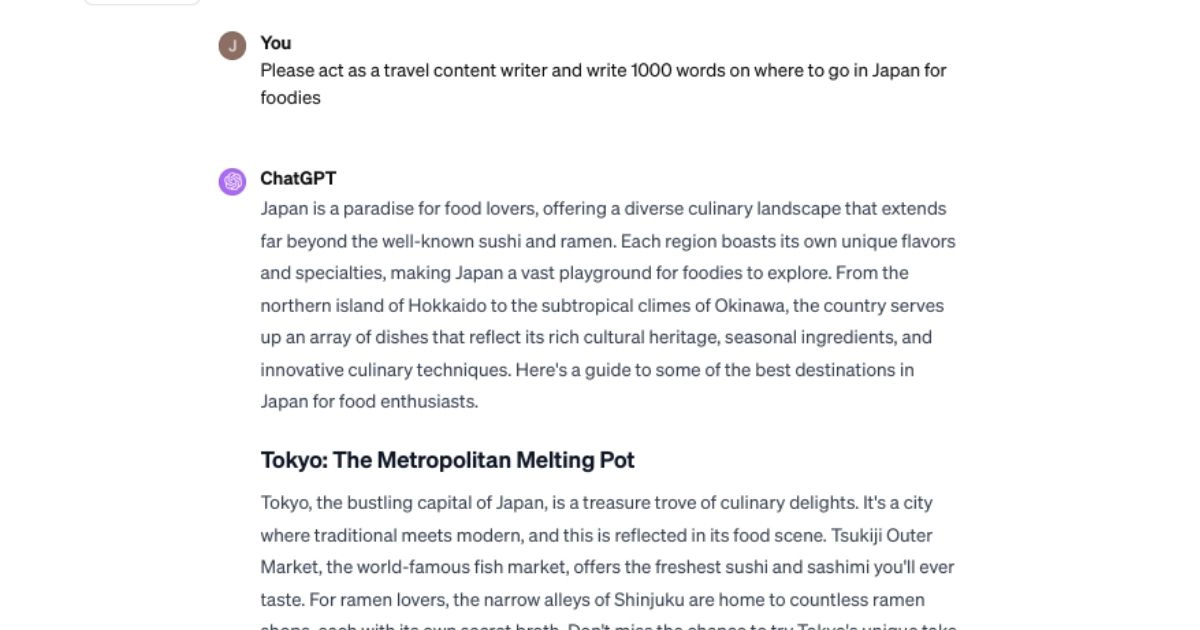
Travel Copywriter
As a travel copywriter, I’m not against generative AI. Quite the opposite, in fact. Tools like ChatGPT are definitely useful for copy and content writing. I’ve been using them since they first came out, and here’s my experience of when to use ChatGPT for writing.
Table of contents
For research
Instead of spending hours researching the facts, you can get them in seconds with ChatGPT. Just make sure you ask it to cite reputable sources so you know the facts are correct and reliable.
Getting words on the page
It’s great at getting pen to paper and getting your creative juices flowing. There’s nothing worse than a blank page, and ChatGPT helps you avoid this. I copy and paste its output into a doc, and then rewrite it in my own words below. Paragraph by paragraph works best. This helps me get the ball rolling, making it easier for me to write.
Finding synonyms and alternative phrases
Repetition kills the flow of your writing, so using synonyms is a must. I always ask ChatGPT to find them for me using this prompt:
- “give me 20 synonyms for X”
- “give me alternative ways to say X”.
Editing and proofreading
As well as using Grammarly, you can also use ChatGPT to check your work. Use a prompt like this:
- “please perform a spelling and grammar check on this copy and fix the errors. Then highlight what you changed”
You copy and paste your writing with this prompt into the model, and it does it for you. It can miss things, though, so be sure to re-read your work.
Switching between American and British English
Being from the UK, I naturally write in British English but I craft a lot of copy for American audiences. So I use this prompt:
- “please ensure all spelling, vocabulary, and phrases are correct for an American audience. Please make the relevant changes”
I copy and paste my work with this prompt, and it makes the changes for me.
Adapting tone and style
You can use AI to adapt the tone and style of your writing. Let’s say you write a blog post. You may then want to turn parts of this blog into an Instagram post. So copy and paste your work with the below prompt:
- “Please adapt this content so the tone and style is suitable for an Instagram caption”
This also works for switching to journalistic styles, changing reading grades and more.
Translating
Random fact, I’m fluent in Spanish and also do freelance translation work. I find that ChatGPT and AI tools are great for translation. Obviously, the first output sounds translated, but you simply edit it afterwards. This process is called MTPE, machine translation post-editing.
You can even get ChatGPT to do the editing for you. Use a prompt like this:
- “Please act as a native English-speaking editor and edit this Spanish to English translation to make it sound like it was written by a native-English speaker”
Clever, right?
Reproducing short content at scale
It’ll be easier if I explain this using an example.
Let’s say I need to write 100-word descriptions of each of London, Paris, Berlin, Madrid, and Rome.
I would write the first one on London and then ask ChatGPT to adapt it to the different destinations. Here’s the prompt:
- “Please act as a travel copywriter. Adapt the below destination description to Paris. Please keep the tone, style, length, and ideas the same”
It then adapts what I wrote to Paris. This only really works for shorter pieces of content, let’s say less than 250 words.
What to watch out for
AI isn’t perfect and it’s prone to errors. Here’s what to look out for when using it:
Plagiarism
Yep, AI is known to copy other people’s work. Read my post on ChatGPT and plagiarism to find out more.
Incorrect facts
It often gets its facts wrong, so always make sure you double-check the work. You should ask it to cite sources in the output so you can see how reliable they are.
Forgetting things
I’ve found that it can often forget your instructions. This is especially true in longer chat threads or for longer pieces of content. A good way to see this is to finish your first prompt with this:
- “Please end all your outputs with #”
When it stops finishing its outputs with #, that’s when you know it’s starting to forget.
Lack of originality
As I always say, artificial intelligence is not artificial creativity. It doesn’t come up with new ideas; it calculates them based on the data it has. This means it can’t come up with entirely new concepts.
Missing things
If you ask it for spelling or grammar checks, be sure to go over the work yourself as it can often miss your instructions. I find the briefer the prompt, the better the output.
Conclusion
ChatGPT and other AI tools are excellent for productivity and content creation. While I advise against publishing AI-generated content, you should definitely use these tools to help you write. AI is not 100% reliable, though, so be sure to double-check its output.
Oh, and while I’ve got your attention, if you prefer to use a human for your writing, I’m here as your go-to travel copywriter.




